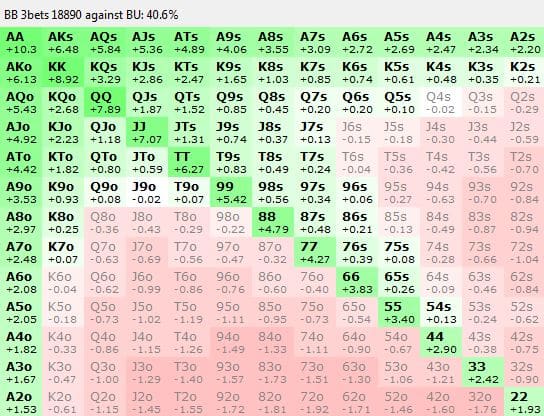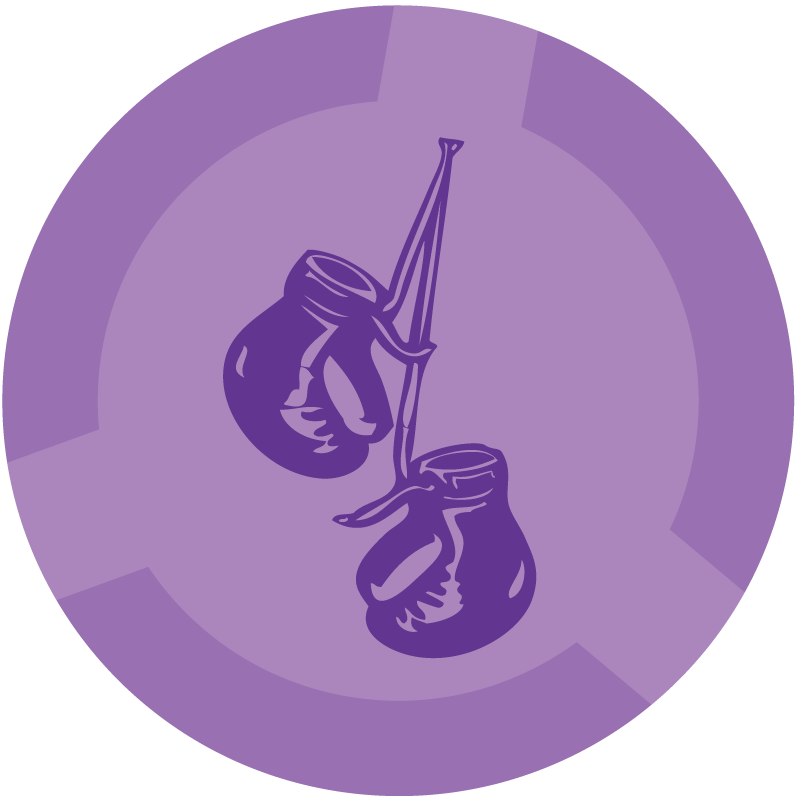Defensive Poker Strategy
- The top 5 strategies for novice poker players, and intermediate-level poker players include the following: Opening Hands, Bet Sizing, Limping, Folding, and Positioning. Once you’ve mastered these 5 Texas Hold’em poker strategies, you’ll be able to incorporate many other strategies into your overall game plan.
- Upgrade your poker strategy and learn to beat the pigeons, fish, donkeys, and other bad players with euphemisms of animal kingdom members. Advice like “Avoid trap hands and play conservatively from early position.” is only useful to the most inexperienced players, but a bottom-line tip like, “Pocket pairs become more valuable against early position raisers,” might actually be useful.
- Minimum Defense Frequency (MDF) is a mathematical concept used in poker to determine the amount of your hand range that you should be defending and continuing with (either by calling or raising) when facing a bet from your opponent. When to Use MDF?

Stud strategy poker tips and how-to for low limit and limit 7 card stud-hi, hi/low, and tournament play. Includes links to recommended sites with heavy action stud tables and other stud poker resources. A second temptation is to go into highly defensive mode — that is, to tighten up even further, waiting for the rare premium hand before playing back at the bully. There are two problems with this.
Bullies are a fairly common subspecies of poker player. You can’t spend too long at the tables without running into one. They bet and raise with reckless abandon. Playing against them can be scary, like riding a bucking bronco.
Let’s talk about three general strategies for playing against the poker bully, two of them wrong, one of them right.
One temptation is to try to out-bully the bully, to punch back even harder than he is hitting. The problem is that you are pretty much reduced to flailing away wildly, kind of like Ralphie in A Christmas Story when he finally loses it and goes nuts on the bully Scut Farcus. It might work, but it’s risky and costly. In the poker setting, it also leaves you wide open to being exploited by other players who are smart enough to wait to trap both of you with a monster when you’re trying to out-bully each other with mediocre holdings.
A second temptation is to go into highly defensive mode — that is, to tighten up even further, waiting for the rare premium hand before playing back at the bully. There are two problems with this. First is that you’re missing out on lots of money that the bully is putting into pots with weak hands which you could win if you were braver. The second is that even minimally intelligent bullies will figure out that the guy who punches back once an hour is doing so only when he has a big hand. He’ll just fold, giving you one pathetic little pot for all your patience and consternation.
The third option — and the correct one — I learned from Mike Caro’s writings. In fact, I think it’s the single most profitable piece of poker strategy advice I’ve ever encountered:
A poker bully is by definition too aggressive. In order to be a bully, he must make a fundamental mistake — he must bet and raise too often. When an opponent makes a mistake, there’s always a way to take advantage. Here’s how to take advantage of a poker bully:
Call more often. Because a bully is betting more hands, it’s obvious that he must be betting more than just the ones you would normally bet. This means you can relax your calling standards and still make a profit.
Bet less often. A key to defeating a poker bully is to let him hang himself. Since his major mistake is betting too liberally, you should give him every opportunity to defeat himself by repeating that mistake. You should check and call frequently. You should also bet less often when a poker bully checks into you, because a bully likes to check-raise a lot. Therefore when he foregoes the opportunity to be a betting bully, you should be wary of a check-raising bully. Just check along.
When you do these two simple things, the bully has a losing expectation against you. And, in the long run, he cannot win. Sometimes it’s tempting to “out bull” the bully by being even more aggressive than he is. That’s the wrong answer. You can’t win at poker by exaggerating the same mistake an opponent is making.
Read the whole article on Caro’s web site here.
Can such a simple formula actually work? Yes. Absolutely it can.
I fondly remember one poker session in which a bully figured prominently. I joined the game and watched him raise the first five hands in a row. He was running over the table, cowing everybody into conceding him pot after pot while almost never having to show a hand.
When a seat opened up two to his left, I made a beeline for it. Caro’s formula is much easier to apply when you have position on the bully.
Then I just started calling him down with medium-strength hands. This took some courage, because he tended to bet big when he was bluffing, since he wanted to induce folds, and I usually try to avoid playing big pots with just one-pair kind of hands. But those are often enough to beat a guy who’s betting with nothing.
Eventually he gave up and said, “I’m done trying to bluff you.” But it was too late. In a $1/$2 no-limit hold’em game I had made $399 in under two hours — almost all of it from the bully’s stack. He had lost the stack he’d had when I sat down, plus two more buy-ins.
I was not the only one to profit. The other players caught on to what I was doing, and copied it. Somebody was calling down the bully every time he tried to win a pot by hammering at it with big bets. Once a bully has been shown to be just a weakling in a scary disguise, all of his former victims are eager to get their licks in.
I love the simplicity of the strategy of just calling the bully. Of course, sometimes he gets lucky and hits something big, and you look pretty foolish calling three times with not much of a hand. But in the long run, those instances are far outweighed by both the monetary effect of his too-frequent bluffing and by the psychological effect that you have on him by not backing down to his attempts at intimidation.

In a Card Player magazine column a few years ago, Bob Ciaffone penned a wonderful apothegm that neatly sums up the same concept in a different way:
“We know you can fight fire with fire, but what is wrong with fighting it with water sometimes?”
Robert Woolley lives in Asheville, NC. He spent several years in Las Vegas and chronicled his life in poker on the “Poker Grump” blog.
Get all the latest PokerNews updates on your social media outlets. Follow us on Twitter and find us on both Facebook and Google+!
Tags
no-limit hold'emcash game strategytournament strategyMike CaroBob CiafffoneRelated Room
888pokerRelated Players
Mike Caro
When you become the annoying little bastard who is check-calling nearly every street of every hand, do yourself and everyone at the table a favor and please sit out, or, for God’s sake, FOLD. If you’re constantly chasing your hands against already-made hands and you’re questioning your outs and if your card(s) will catch, this is very poor play. You’ll be taken advantage of, and you won’t see much as far as winnings are concerned. You’ll maybe break even if you’re that good at not losing an entire wad while playing that terribly. Being on the receiving end of this type of play is always welcome, however, you do not want to be the person giving away the free money, right?
Playing “not-to-lose” is a terrible way to play, and often it means that you are on tilt from one-too-many bad beats or you’re mindset just isn’t with the game altogether. Sure, there are hands where you legitimately will be check-calling. For instance when you know that your cards are still live to a flush or a straight and someone has just turned aces up or three of a kind and you know they will definitely raise you.
When check-calling becomes a habit or if it is already a habit, cut it out. If you are not playing confidently and want to win significant money, get back on your horse and start playing up to par. Otherwise, sit out, leave or continue the casual play if that’s what you’ve set out to do.
The habit of this type of play at a micro-limit (penny and dollar tables) inhibits growth and necessary skills to advance when playing at higher limit tables. Having your chip stack whittled down while learning how to adjust is a very costly lesson and just may keep you at lower limits for lack of understanding about how the strategy changes at higher limit tables. (see Making the Move)
To get back in focus, leave the past behind you. Re-identify the strong players at the table. (You are probably by now pegged as a weak one). Re-evaluate the starting combos, and pay attention to the door cards and start counting suits and numbers. If you are unable to stay focused on those things, it is not the best time to play. What you want to do with your money from there is up to you. Be disciplined and do not fool yourself into thinking that you’ll turn over a new leaf when you aren’t exactly confident that you will.

Especially in tournament play at the higher levels after losing a significant amount of chips on a bad beat, defensive play may seem like the right strategy, yet in most cases it is not. If you have no business in a hand, get out right away. Tighten your strategy to stretch out the chips and bets, and when you do go into a hand play to win.

A good deal of this is all learned, or, we become aware of playing defensively, in hindsight. Be attentive at all times of how you are representing your cards and presenting your play at a table. If you’re in a space where you are intimidated sit out and take a break until you regain confidence and you’ve let the past go. If you are in a tournament where time cannot be afforded to do so because the bet minimums are going up, your only save is to shift your thinking out of, “playing not to lose” mode straight into “playing to win” mode however you need to do it, and only you know how it can be done.
Defensive Poker Strategy Against

Defensive Poker Strategy Game
« Back « »Next»